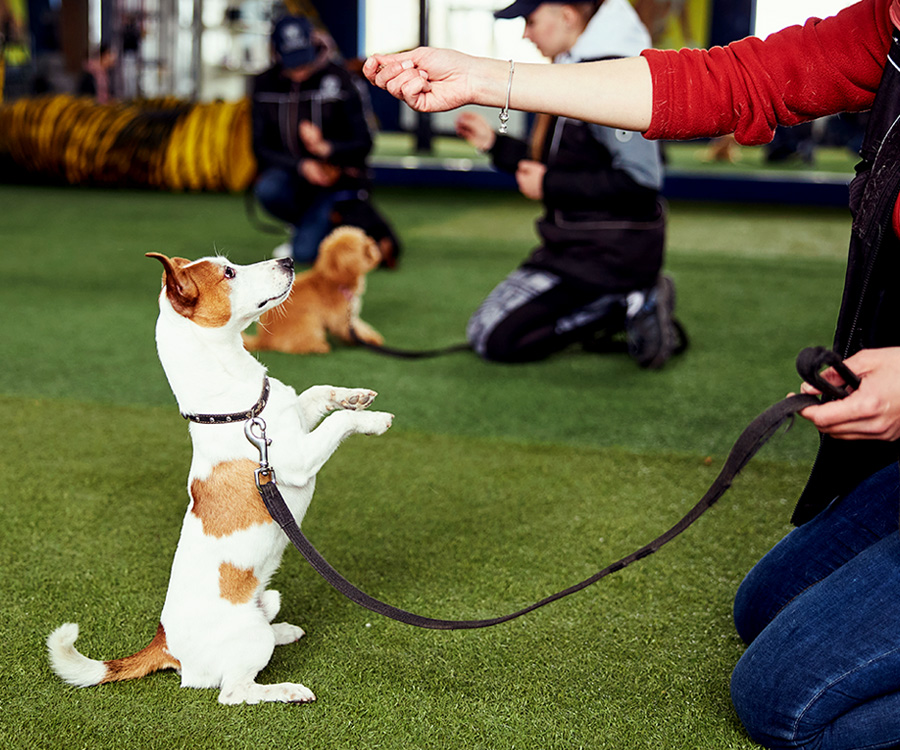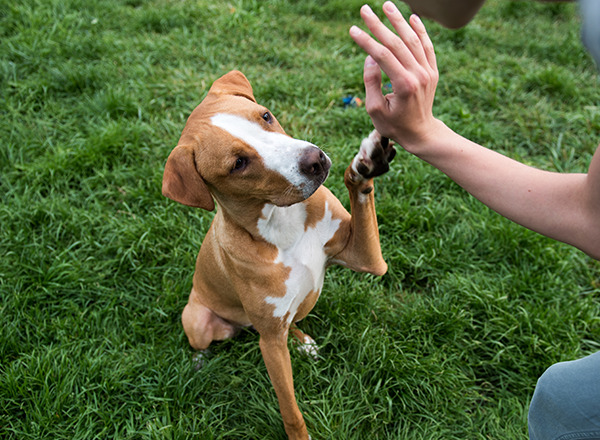The Role of Socialization in Dog Training for Better Behavior
The Role of Socialization in Dog Training for Better Behavior
Blog Article
Beginner's Guide to Successful Canine Training in your home
Successfully training a pet at home requires a nuanced understanding of canine behavior and efficient interaction strategies. Establishing clear training goals, making use of top quality benefits, and keeping consistency across family participants are important components. Incorporating training into daily routines can improve both involvement and retention.
Understanding Pet Behavior
Understanding canine behavior is important for efficient training and promoting a harmonious connection between people and their canine buddies. Pet dogs connect mostly through body language, articulations, and faces, making it vital for proprietors to translate these signals precisely. Acknowledging actions such as tail wagging, roaring, or cowering can give understandings into a pet's mood and intents.

Common behavioral concerns, such as aggression, stress and anxiety, or too much barking, usually come from misconceptions or unmet needs. Observing and resolving these issues quickly can stop escalation and guarantee a favorable training experience. By cultivating a deep understanding of pet dog actions, owners can customize their training methods to fit their canine companions, inevitably bring about a contented and well-behaved pet dog.
Vital Training Tools
A well-equipped training space can substantially enhance the efficiency of canine training in the house. Necessary training devices make certain that both the trainer and the dog can engage in productive sessions that foster knowing and bonding.

Purchasing a durable chain and a comfortable, well-fitting collar or harness is vital for safety and security and control. These tools aid develop boundaries and make certain the pet dog remains safe and secure throughout training. Additionally, a marked training area, devoid of distractions, help concentration for both the fitness instructor and the canine.
Training aids such as training pads, cones, or dexterity equipment can additionally improve the experience by presenting range and obstacles. Having a note pad or digital application for tracking progress can be very useful, allowing you to keep in mind successes and locations for improvement. Using these vital devices will certainly create a favorable training setting and lay the foundation for efficient discovering.
Creating a Training Regimen
Establishing a regular training regimen is essential for efficient pet training in your home. A well-structured routine not just aids in reinforcing desired habits however additionally provides your dog with a complacency and predictability. To create an efficient training routine, start by determining details training objectives, such as standard commands, chain strolling, or housebreaking.
Select an assigned time every day for training sessions, ideally when your pet dog is responsive and alert. Sessions must be short, around 5 to 15 minutes, to preserve focus and avoid exhaustion. Consistency in timing and environment will certainly boost your pet's learning experience.
Include training into everyday tasks to strengthen skills. For example, method commands during walks or nourishment, which incorporates learning right into all-natural regimens. Additionally, remain adaptable and readjust the routine as needed, fitting your pet dog's energy levels and state of mind.
Favorable Reinforcement Techniques
Positive support methods are fundamental to effective pet training, advertising preferred habits through rewards instead Full Article of penalty. This technique uses positive stimuli, such as treats, appreciation, or playtime, to encourage pets to repeat specific activities. The foundation of this approach is timing; incentives must be given instantly following the wanted habits to produce a clear association.
When executing favorable reinforcement, it is vital to select rewards that are inspiring for your canine. High-value treats, such as little pieces of hen or cheese, can be especially reliable throughout training sessions. Additionally, varying the rewards can keep your pet dog's rate of interest and enthusiasm.
Beginning with straightforward commands, like "sit" or "stay," and progressively progression to more complex jobs. Consistency is crucial; make sure that all relative utilize the exact same commands and incentive systems to stay clear of complication.
Furthermore, it is important to remain person and prevent frustration. Pets, like humans, find out at their own speed. By cultivating a supportive training atmosphere via positive reinforcement, you can improve your pet's knowing experience while enhancing the bond between you and your furry buddy, preparing for successful training end results.
Usual Training Difficulties
While training a pet dog in the house can be a rewarding experience, it commonly features a collection of usual challenges that can evaluate both persistence and consistency. One common problem is disturbance. Dogs may become easily sidetracked by noises, movements, or perhaps scents in their environment, making it challenging to preserve their emphasis during training sessions.
One more difficulty is variance in commands and support. If household participants utilize various hints or benefits, it can puzzle the canine and hinder progression. Establishing a unified approach is important for effective interaction.
In addition, pets can experience stress or stress and anxiety, specifically if they do not recognize what is expected of them. This can result in undesirable actions, such as chewing or barking.
Ultimately, the timing of support is critical (Dog training). Delayed incentives can lessen the efficiency of positive support, as pet dogs may fall short to link the habits with the reward
Overcoming these obstacles needs dedication, clear interaction, and a structured training strategy. Recognizing and addressing these usual challenges will lead the way for a more pleasurable and effective training experience at home.
Verdict
In final thought, effective pet dog training in your home demands a detailed understanding of canine habits and efficient communication approaches. By establishing clear training objectives and utilizing high-grade treats along with positive support, the training process ends up being much more fulfilling for both the pet and the fitness instructor. Flexibility, uniformity, and perseverance are necessary parts that other help with knowing. Ultimately, integrating training into day-to-day routines boosts the bond in between pet and owner, making the experience both delightful and productive.
Developing a regular training regimen is necessary for efficient pet dog training at home.Favorable support methods are essential to efficient canine training, promoting desired behaviors with rewards rather than punishment (Dog training). By fostering an encouraging training setting via favorable reinforcement, you can boost your pet's learning experience while enhancing the bond between you and your fuzzy companion, helpful site laying the groundwork for successful training end results
In conclusion, effective canine training at home demands an extensive understanding of canine habits and reliable interaction techniques. By developing clear training objectives and making use of top notch deals with together with positive reinforcement, the training procedure comes to be more satisfying for both the instructor and the pet.
Report this page